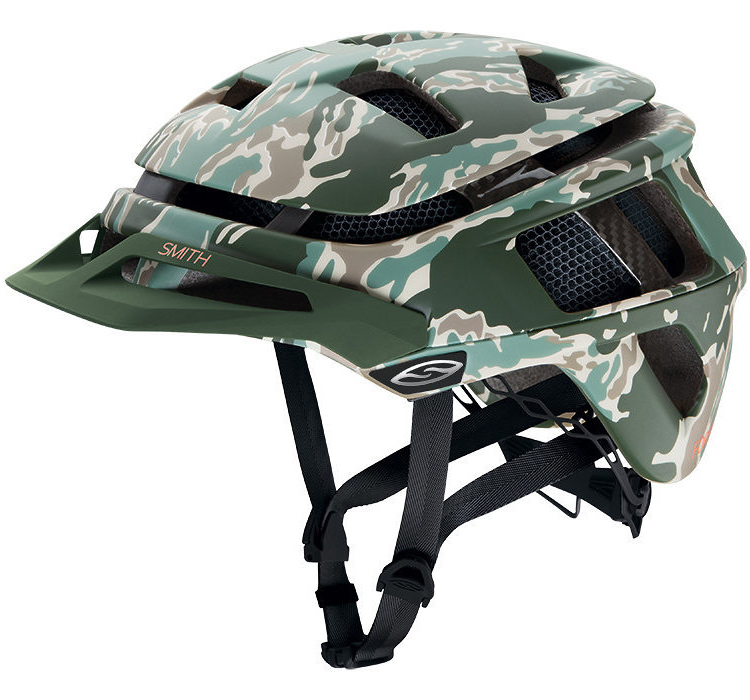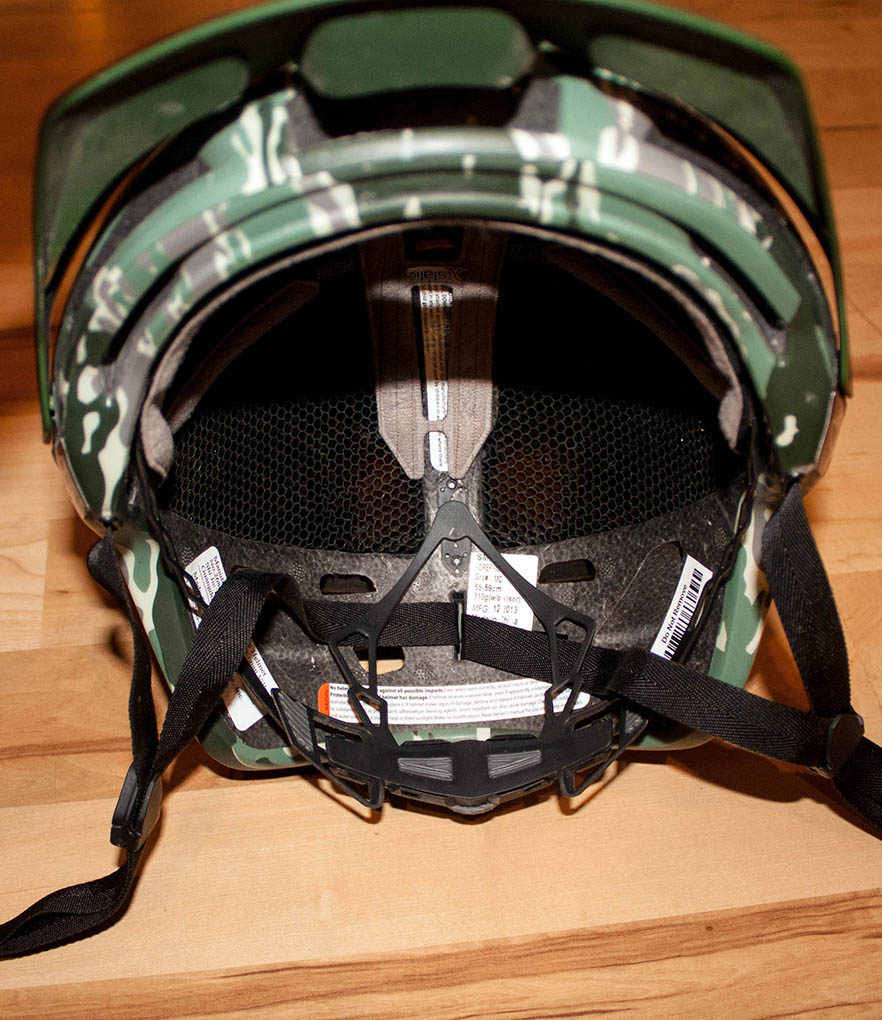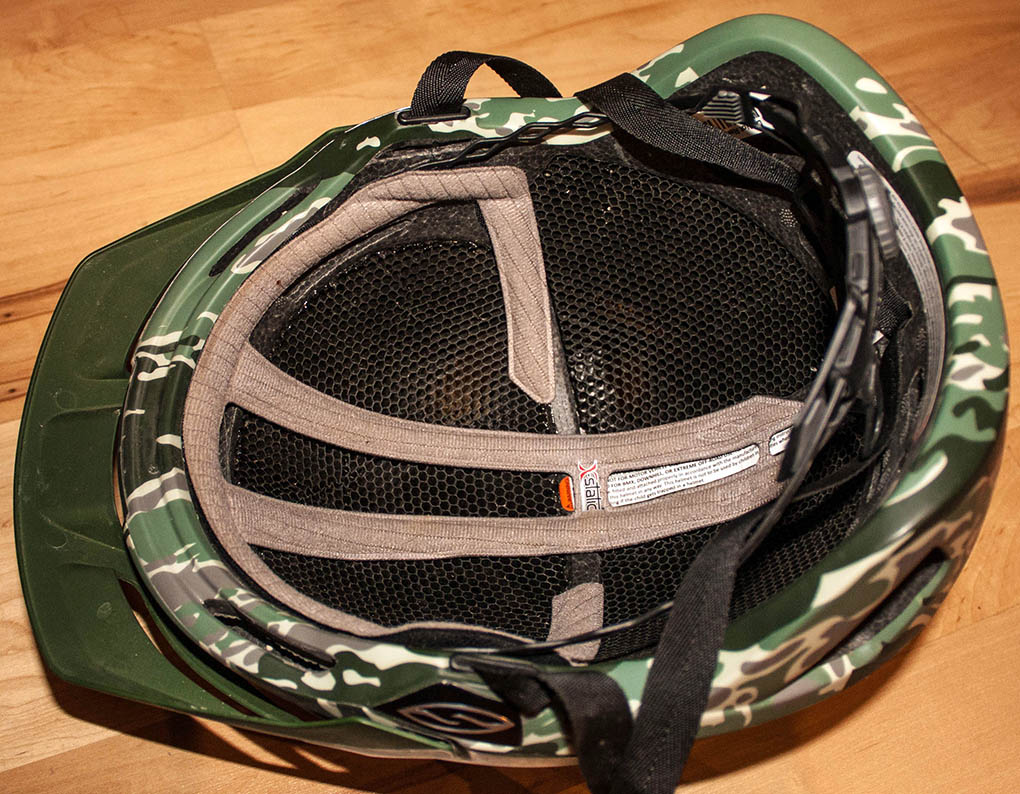
Smith Forefront Helmet
Size: Medium; 55-59cm
Color: Cypress Camo
Duration of Test: 1.5 months
Locations: Whitefish, MT and Southern Utah
Me: 5’9” 150 lbs, 57cm head
MSRP: $220
With their first foray into the world of bike helmets, Smith announced the Forefront last summer. The helmet’s debut sparked a great deal of discussion and debate around the internet, the vast majority of which was based only on a couple pictures. Depending on who you talked to, it was destined to either be better than sliced bread, or a headpiece so odd looking that it would be perfect for Darth Vader.
So how does the Forefront compare to the hype? Is it the best thing ever? The worst thing ever?
I’m pleased to report that Smith’s first bike helmet is pretty damn good. The Forefront does everything it’s supposed to, and in my opinion, doesn’t look any more outlandish when perched atop my noggin than any other helmet out there.
Fit
A sloppy fit significantly reduces a helmet’s ability to protect you in a fall, plus, it’s annoying when your helmet bangs around on your head because it’s too big.
The Forefront fits my oblong-ish head quite comfortably. Typically Giro helmets fit me well, and Bell helmets do not. Smith says the Forefront in a size Medium will fit heads that are 55-59 cm in circumference, and this seems to be true. My head measures 57 cm, and I’m right in the middle of the helmet’s size adjustment range.
The Forefront’s adjustable fit system, called VaporFit, is similar to what lots of other companies use and works well. A dial in the back can be turned to tighten or loosen the fit of the helmet to ensure it fits sits snugly on your skull. The VaporFit system also allows the plastic material around the dial at the rear of the helmet to move up and down for a more precise fit. Again I’ve found that with the helmet’s fit properly set for my head, I’m right in the middle of these adjustment ranges, and the helmet fits nicely.

The padding on the inside of the Forefront is very minimal, but I found it to be completely comfortable. The padding is secured with velcro, and can be easily removed for washing.

My hair is way too short to interfere with the fit of the helmet, but the Forefront’s Vaporfit system drops down pretty low on the back of the head, lower than the Giro Xar or Specialized Tactic, and at about the same height as the POC Trabec. While this is great for full-coverage protection, it might make wearing the Forefront with a ponytail a bit tricky.
The straps on the Forefront are basically the same as the type used on most other helmets on the market. They get the job done and aren’t especially remarkable, although I do still prefer the “Tri-Fix” straps on the Specialized Tactic.
Construction / Safety
The most noteworthy feature of the Forefront is its “Aerocore” construction comprised of a layer of stuff called Koroyd. Koroyd is a product licensed and used by Smith and a few other companies, and is being used in a surprisingly wide range of products. In addition to helmets (see our review of the Smith Vantage, their snowsports helmet with Koroyd), it’s popping up in the core construction of skis, snowboards, and wakeboards.
To a layperson, the Koroyd portion of the Forefront looks like a bunch of green straws packed tightly together. And according to Koroyd’s website, that’s pretty much what it is: they are “co-polymer extruded tubes” that are “thermally welded together.” So a block of melted together straws is cut and molded into whatever shape it needs to be in for a given application.

Most bike helmets are made of molded polystyrene foam (A.K.A. expanded polystyrene; EPS), which is designed to fail on impact. The general idea there is that the foam cracks and dissipates energy, allowing your head to come to a slightly less abrupt stop when you smash it into something. And in many cases, that slight dissipation of force is crucial in preventing or reducing the severity of brain injuries.

Nice review. “Aesthetics” paragraph one — best ever, and an area in which I might compete with you!
One note is that I believe Smith touts the helmet being constructed in a way that allows for glasses to be kind of clipped onto the top, upside down, facing backwards. Works pretty well, but not very easy to achieve with one hand.
Yup – I believe you’re correct on the sunglasses, but that’s only for certain models of Smith glasses (which I don’t own). I tried attaching my generic gas station sunglasses and couldn’t find any way to keep them on the helmet.
I just picked up a white one, size medium, from backcountry. I also happen to own some Smith Pivlock glasses, which fit as advertised. They seem pretty secure when put into that little channel on the top of the helmet. I’m coming off a Fox Flux, and the Smith helmet fits my head very well (longer front to back than side to side). It only took a minute to get it dialed in, with all the straps adjusted into position. *FWIW, I find Giro helmets tend to be made for guys with very round skulls.
I’ll try to follow up with some comments on the airflow, but here in North Idaho, I do like the fact that the koryod will keep the bees out of my helmet!
Follow up on the airflow. As long as you are moving, its good. At slow speeds, like if you are doing a hike-a-bike, there isn’t enough air moving into the front to “push” the hot air up and out. Overall, I’m digging this helmet.